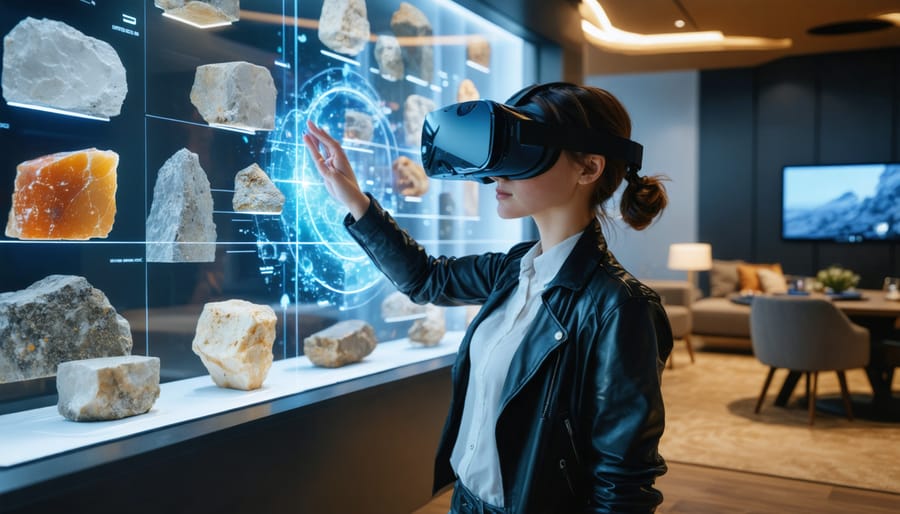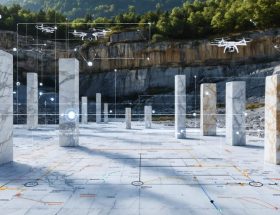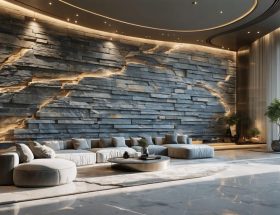Step into a world where technology meets nature in groundbreaking ways. Virtual reality is revolutionizing how we experience, select, and visualize natural materials in our spaces. By merging high-resolution 3D scanning with immersive VR environments, professionals and homeowners can now explore endless possibilities for natural stone applications without moving a single slab.
Imagine walking through your future kitchen, watching how marble countertops catch the morning light, or visualizing how different granite patterns flow across your space – all before making a single commitment. This isn’t science fiction; it’s the new reality of stone selection and design visualization.
The convergence of virtual reality and natural materials is transforming the way architects, designers, and homeowners make decisions, reducing costly mistakes and ensuring perfect material matches. As we stand at the intersection of digital innovation and timeless natural beauty, VR technology offers an unprecedented opportunity to bridge the gap between imagination and implementation.
How VR Technology Revolutionizes Stone Selection
Real-Time Visualization Tools
Modern stone selection technology has revolutionized how customers visualize natural stone in their spaces. Virtual reality tools now enable viewers to experience stone patterns, colors, and textures in photorealistic 3D environments that mirror their intended installation settings. These advanced visualization platforms allow users to switch between different stone varieties instantly, observing how light interacts with various finishes and how patterns flow across surfaces.
Users can explore their chosen stone materials from multiple angles, zoom in to examine intricate details, and even simulate different lighting conditions to ensure their selection maintains its appeal throughout the day. The technology renders stone surfaces with remarkable accuracy, displaying natural variations, veining patterns, and surface characteristics that are true to life.
For kitchen and bathroom applications, these tools can show how stone countertops or wall cladding will look alongside existing fixtures and cabinetry. This immersive experience significantly reduces the uncertainty in stone selection, helping customers make confident decisions while minimizing the risk of costly mistakes or disappointment with the final installation.
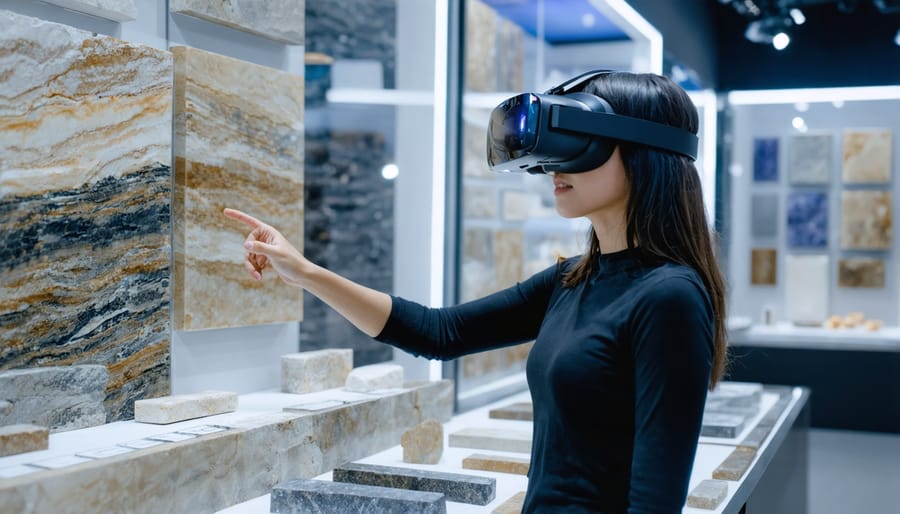
Interactive Stone Pattern Mapping
Virtual reality technology has revolutionized how we visualize and select natural stone patterns, offering an immersive experience that allows users to explore different cuts, finishes, and layouts in real-time. Through sophisticated 3D modeling, designers and clients can instantly switch between various stone patterns, viewing how different cuts would appear in their intended space.
The interactive mapping feature enables users to manipulate stone slabs virtually, rotating them 360 degrees and adjusting their positioning to achieve the perfect book-matching or pattern flow. This technology proves particularly valuable when working with dramatic materials like onyx or marble, where vein patterns significantly impact the final aesthetic.
Users can experiment with different laying patterns, from traditional running bond to more complex herringbone or basket weave designs. The real-time visualization eliminates guesswork, showing exactly how pattern transitions will appear at corners or how veining will align across multiple slabs. This capability has become invaluable for both residential and commercial projects, ensuring that the final installation matches the client’s vision while minimizing costly mistakes or material waste.
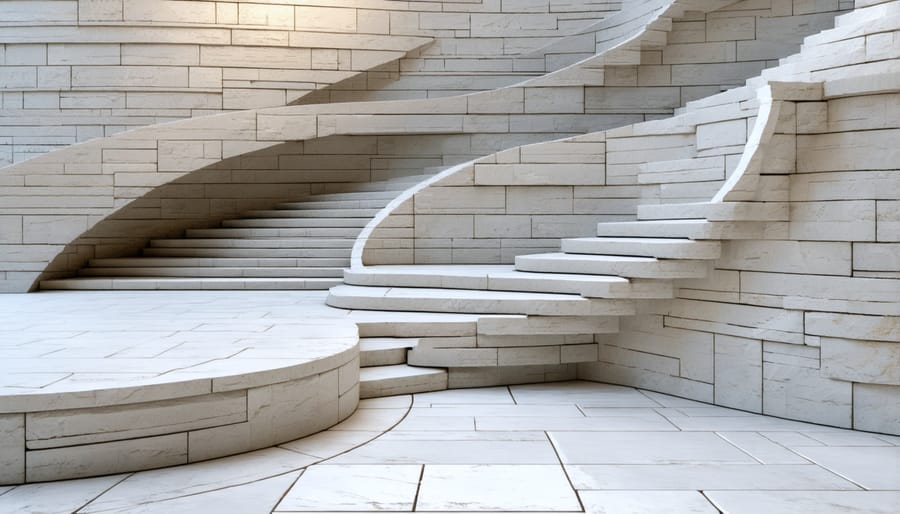
Practical Applications in Design and Planning
Kitchen and Bathroom Visualization
Virtual reality has revolutionized how homeowners and designers approach kitchen and bathroom renovations, particularly in modern interior design applications. Through VR technology, customers can now visualize different countertop materials, backsplashes, and wall treatments before making final decisions, significantly reducing the risk of costly mistakes.
The technology allows users to experiment with various natural stone options, from classic marble and granite to exotic quartzite, seeing how different materials interact with lighting conditions and existing design elements. Designers can instantly switch between finishes, patterns, and colorways, helping clients understand how each option impacts the overall aesthetic of their space.
What makes VR particularly valuable in kitchen and bathroom design is its ability to showcase how natural stone performs in different applications. Users can examine how various stone surfaces appear from multiple angles, assess veining patterns in countertops, and evaluate how different finishes might look when installed on vertical surfaces versus horizontal ones.
The technology also helps in visualizing practical considerations, such as how different edge profiles will look on countertops or how stone slabs will align in larger installations. This level of detail enables homeowners and designers to make more informed decisions while ensuring the final result matches their vision perfectly.
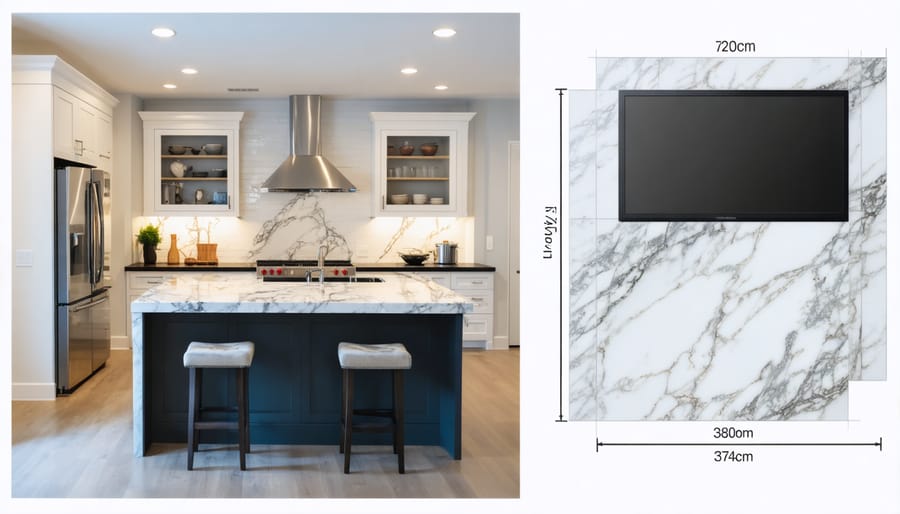
Exterior Applications and Landscaping
Virtual reality has revolutionized the way architects and designers approach exterior stone applications and landscape design. Through immersive VR technology, professionals can now create detailed 3D visualizations of outdoor spaces, allowing clients to experience proposed stone facades, pathways, and garden features before construction begins.
Landscape architects utilize VR platforms to showcase different stone varieties in various outdoor settings, demonstrating how natural materials weather and interact with surrounding elements throughout different seasons. This technology enables real-time modifications of stone patterns, textures, and arrangements, helping clients make informed decisions about their exterior design choices.
For facade design, VR applications allow users to visualize how different stone types will appear on building exteriors from multiple angles and distances. Designers can experiment with various stone cuts, patterns, and combinations while considering factors like natural lighting, shadows, and weather effects. This capability is particularly valuable for heritage restoration projects where precision and historical accuracy are crucial.
VR technology also assists in sustainable landscaping by simulating water flow patterns around stone features and analyzing how different materials affect local ecosystems. Designers can evaluate the environmental impact of their stone choices and make adjustments to optimize both aesthetics and functionality.
The integration of VR in exterior stone applications has significantly reduced the risk of costly design modifications during construction, while ensuring client satisfaction through accurate pre-visualization of the final result.
Benefits for Designers and Clients
Cost and Time Efficiency
Virtual reality technology significantly reduces both costs and time associated with natural stone selection and approval processes. Traditional methods often require shipping multiple stone samples to clients, which can be expensive and time-consuming, especially for international projects. With VR visualization, clients can instantly view and evaluate numerous stone varieties, patterns, and finishes without waiting for physical samples to arrive.
The decision-making process becomes more streamlined as stakeholders can virtually explore different stone options in real-time, comparing alternatives side by side. This immediate visualization capability helps avoid costly mistakes and reduces the need for material replacements after installation. Project teams can make informed decisions faster, leading to shorter project timelines and reduced labor costs.
Additionally, VR technology eliminates the need for multiple site visits and in-person meetings. Architects, designers, and clients can collaborate remotely, reviewing stone selections and making adjustments in virtual environments. This remote capability not only saves on travel expenses but also accelerates project approvals and minimizes delays in the construction timeline.
The reduction in sample shipping, faster decision-making, and improved collaboration ultimately translate to significant cost savings and increased project efficiency for all parties involved.
Enhanced Client Satisfaction
Virtual reality technology has revolutionized client satisfaction in natural stone selection by providing an immersive and confidence-building experience. Through detailed virtual stone comparison capabilities, clients can now visualize their projects with unprecedented clarity before making final decisions.
The ability to walk through virtual spaces featuring different stone options has significantly reduced decision-making anxiety among homeowners and project managers. Clients report feeling more assured in their material choices when they can experience the full impact of various stone types in a realistic, three-dimensional environment. This enhanced visualization leads to fewer revision requests and post-installation adjustments.
Project timelines have also improved dramatically, as clients can quickly evaluate multiple design options without the need for physical samples or mock-ups. The technology enables immediate feedback and real-time modifications, creating a more collaborative design process between professionals and their clients.
Statistics show that projects utilizing VR technology during the selection process have a 40% higher client satisfaction rate and a 30% reduction in post-installation changes. This increased confidence translates to smoother project execution and more positive client testimonials, benefiting both service providers and customers.
Virtual reality has revolutionized the natural stone selection process, transforming how designers, architects, and homeowners visualize and choose materials for their projects. By bridging the gap between imagination and reality, VR technology enables more confident decision-making while reducing costly mistakes and sample waste. The ability to virtually experience different stone varieties in various lighting conditions and settings has streamlined the selection process and improved client satisfaction.
Looking ahead, the integration of VR in natural stone applications is expected to become even more sophisticated. Advanced rendering capabilities, haptic feedback systems, and artificial intelligence will further enhance the virtual experience, making it nearly indistinguishable from physical showroom visits. As the technology becomes more accessible and affordable, we can anticipate wider adoption across the industry, from small design firms to large architectural practices.
This technological evolution will continue to benefit both professionals and consumers, offering unprecedented convenience, sustainability, and creative freedom in natural stone selection. As VR tools mature, they will remain an invaluable asset in the future of architectural design and material specification.

